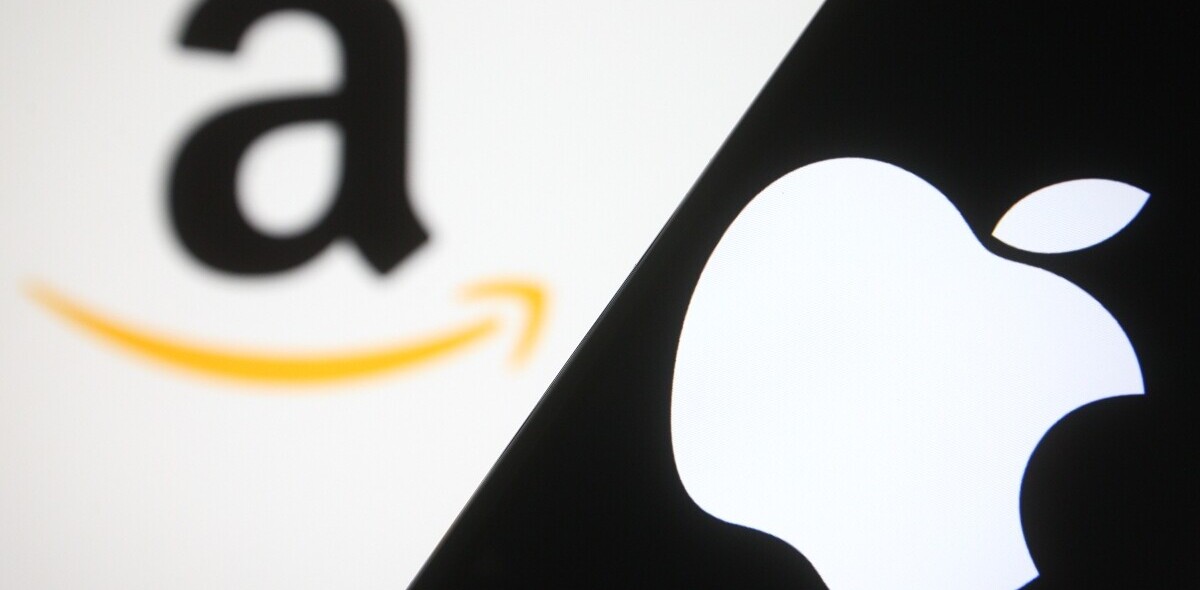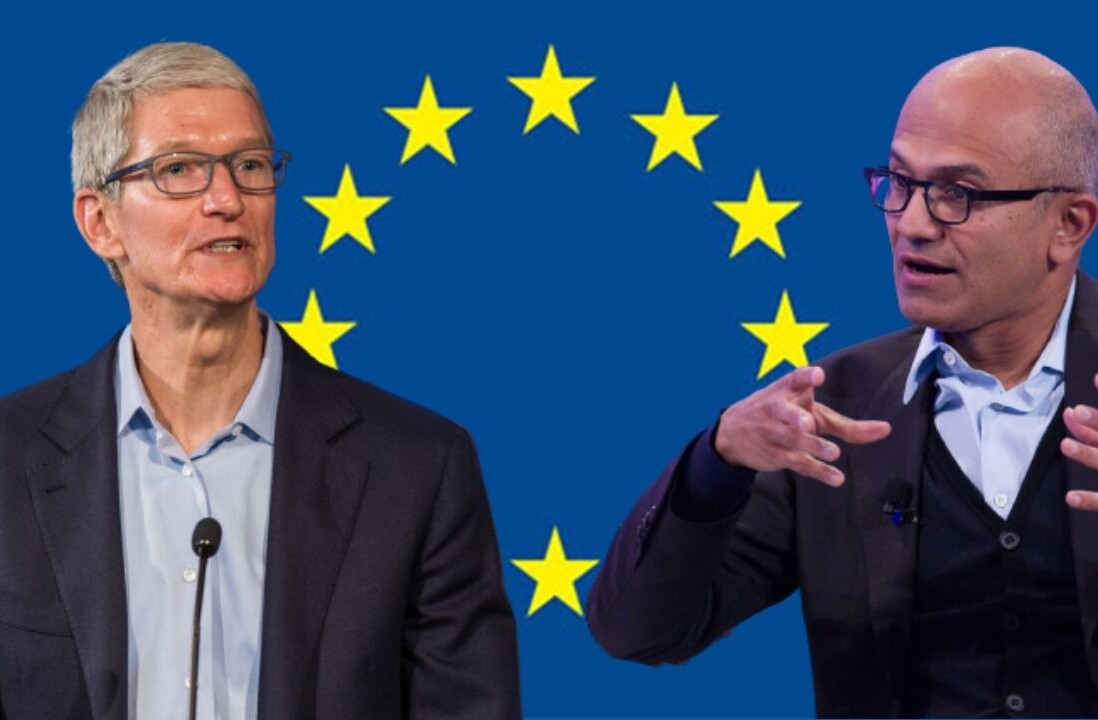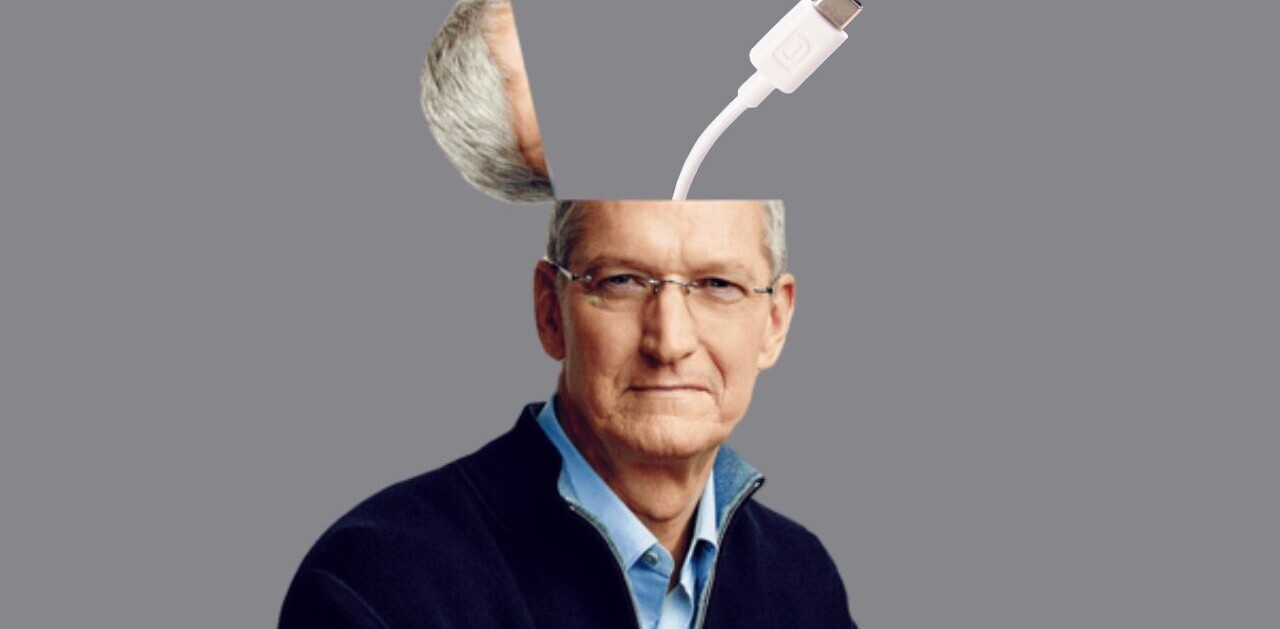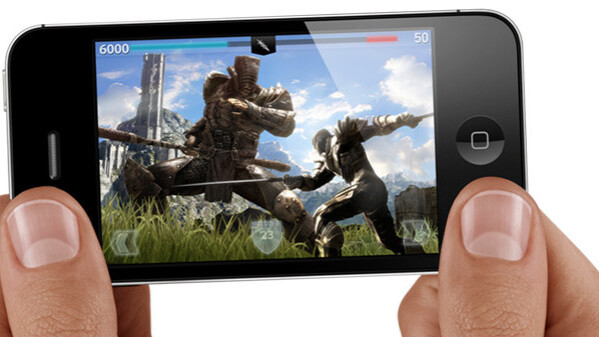
The past week has been quite a roller-coaster for Apple; the company finally ended the 15-month wait for a new iPhone, launching the iPhone 4S with its dual-core A5 processor, 8-megapixel camera, dual-antennae and Siri voice assistant, but also because its visionary co-founder and talismanic leader Steve Jobs finally succumbed to his battle with pancreatic cancer.
Whilst the headlines have been dominated by Jobs’ sudden and unexpected death, Apple’s iPhone 4S launch came with some criticism, as many expected the Cupertino-based company to introduce the iPhone 5, with a drastically redesigned chassis and teardrop design, but received it’s low-cost but high-powered counterpart.
Apple debuted a smartphone that utilises the same design as the iPhone 4, focusing instead on bringing the feature-set up to modern day standards. With Android vendors tripping over themselves to sell the latest and greatest Android handsets to steal a march on its smartphone developments, Apple knew it needed to deliver not only on the hardware front, but also in software innovation – perhaps the ultimate factor in distinguishing itself above the competition from Android, BlackBerry and Windows Mobile.
When Phil Schiller, Apple’s Chief of Marketing, took the stage on Tuesday, one of the most important things he needed to say was “don’t be deceived, because inside it is all new”. Schiller took the time to detail the iPhone 4S’ internals; explaining that Apple’s new smartphone would boast the same A5 processor as the iPad 2, with two times more power and up to seven times faster graphics, the 8-megapixel camera with a custom lens, larger f/2.4 aperture and improved illumination sensor, auto white balance, advanced color accuracy, face detection, and reduced motion blur – referencing the boost in video capabilities that sees videos now captured in full 1080p HD.
Then came Siri, Apple’s “intelligent personal assistant”. Acquiring the company in April 2010, the voice-assisted assistant was already available on the iPhone, albeit via a third-party application, that would be able to deliver film times simply by asking, “What time is Harry Potter showing near me?”. The acquisition, which saw Apple invest a reported $200 million, delighted many in the mobile and technology industries, namely Robert Scoble (who had previously visited the company and helped popularise its technology before it was bought):
Because Siri hooked up APIs from around the world in a very cool personal assistant, it was one of the first apps I loaded on my iPad. Why? Because you could talk to it with your voice and have it do things from getting you a taxi to having it buy movie tickets for you.
The value it unlocked is huge. This shows Apple is very willing to buy its way into the new mobile web and the new API-driven web. This also could be a major cornerstone in how it competes with Google.
Despite a 1 hour and 45 minute presentation discussing the latest technologies inside the iPhone 4S at its Cupertino campus, Apple still emerged from its “Lets Talk iPhone” event with shares falling by as much as 5%. Although the company rallied later in the day, Apple’s share price ended down overall.
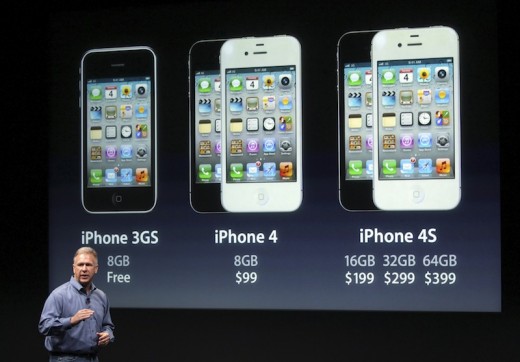
Following the investors, analysts weighed in. A response from JMP Securities analyst Alex Gauna captured the tone of many other analysts but also consumers:
We couldn’t help but come away with the impression that the advances, launch forum and presentations lacked much of the panache seen in the past. This could heighten investor anxieties around how the company will operate without visionary leader Steve Jobs at the helm as well as leave the door open for Android to continue gaining worldwide market share at a faster pace.
Despite some negativity, when preorders for the iPhone 4S opened on Friday morning, Apple saw huge demand for the new iPhone – as did nearly all of its operator partners, particularly in the U.S, as they struggled to cope with the onrushing traffic of customers trying to secure an upgrade or order the new iPhone on a new contract (I ended up being sent two confirmation emails for one iPhone 4S order on the Apple website).
Despite all the ‘disappointment, pre-sales of Apple’s iPhone 4S were spectacular. As one of three mobile operators selling the new smartphone in the U.S, AT&T announced it had sold more than 200,000 iPhone 4S handsets in under 12 hours of the device being available for pre-order, making it the most successful iPhone launch to date for the carrier.
Taking just AT&T’s pre-sales and comparing them with 600,000 total pre-orders on all operators and distributors for the iPhone 4, Apple has managed to tally over a third of those record pre-orders before any of the other sales partners (and Apple itself) released sales data of their own.
Given that Sprint is offering unlimited data on its network for the iPhone 4S and coupling the fact that it is selling the iPhone for the first time, combined sales on each of the U.S networks could theoretically overtake that of the iPhone 4, before sales from other countries are added to the mix.
iPad sales were estimated to have reached 500,000 units in the same period.
Other than the fact Apple is the ‘in’ technology company of the moment, there are reasons as to why the iPhone 4S has sold so well on its opening, some of which which are detailed below.
The Long 15-month Wait
Moving away from its traditional 12-month iPhone release cycle, Apple waited 15 months to announce the iPhone 4S, leading the media, and in turn, consumers to speculate about the chances of seeing both a new iPhone 5 and a cheaper iPhone 4, labelled the iPhone 4S.
As with anything Apple, interest in the new device reached fever pitch, with every little piece of news related to its launch making its way from source, to publication and then to the consumer – who now, more than ever, is as well placed to tell you about the specifics of a new Apple device than a seasoned Apple writer, who hunts down leads and probes sources for inside information on the device.
Existing iPhone owners have seen a large number of high-powered Android smartphones from Samsung, HTC, Motorola and LG hit the market whilst the new iPhone was in development, not only tempting them away from the iOS platform but in-turn fueling desire for the then upcoming device.
When its board of executives took to the Cupertino stage to unveil the iPhone 4S, Apple’s new CEO Tim Cook announced that preorders for the device would begin three days after the event (in numerous countries around the world) with a release date just ten days later. This proved that not only was the company confident it would be able to sell its new smartphone, it had also made the necessary steps to ensure that it was able to provide large numbers of smartphone units to its operator partners by October 14 (if it hadn’t already).
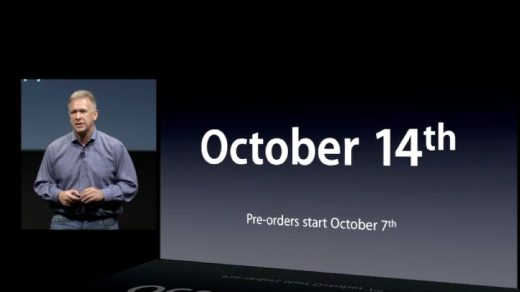
October has been and will continue to be a busy month for new high-end smartphones. Apple’s decision to announce and then open the ordering process three days later was not taken lightly. Android’s rise has Apple checking its progress and whilst it might be confident of its ability to fight off advances from Samsung, HTC, RIM and Nokia and even Google, the company has moved to ensure the buzz and interest in its product isn’t overshadowed by new releases from its rivals.
Consumers used the wait to look at the competition, holding on to their existing Android, iPhone and BlackBerry handsets, to see what Apple would deliver. The bump in specifications brought the iPhone up to speed with its competition, pushing those on the fence that had been tempted by the ease of iOS and the usability of the iPhone 4 but didn’t want to purchase a 15-month old smartphone.
When the iPhone 4 launched, customers faced issues trying to pre-order the handset with the Apple Store crashing to a surge in traffic, leading to the suspension of orders as demand threatened to exceed supply. Knowing that demand would be high for the iPhone 4S, regardless of how it was received, the threat of iPhone 4S supplies being depleted within the first day would have played on consumer minds as they worked out whether they would put the money down for the new device.
Over 1.7 million iPhone 4 handsets were sold in its first three days of availability. The number is certain to be smashed over this weekend, with more operators (including Verizion and Sprint in the U.S, which were lacking at the iPhone 4 launch) and Apple’s emergence as a smartphone giant in China, consumers that a year ago were either unable to purchase an Apple smartphone or weren’t in a position to do so.
Let’s talk about Siri
Siri is Apple’s ace card in its fight against its smartphone rivals. Before Apple bought Siri, the company was preparing to release its software for both BlackBerry and Android handsets, but as soon as it became part of Cupertino, all developments for rival platforms were soon cancelled.
The Cupertino-based company describes the voice-activated personal assistant on its official website:
Siri on iPhone 4S lets you use your voice to send messages, schedule meetings, make phone calls and more. Ask Siri to do things just by talking the way you talk. Siri understands what you say, knows what you mean and even talks back. Siri is so easy to use and does so much, you’ll keep finding more and more ways to use it.
When the iPhone 4S launches, users will be able to set reminders, check the weather and stocks, send messages, manage email and calendar appointments. The app also boasts contact management, note-taking abilities, music-control, web browsing and map navigations.
The idea isn’t new, Google has offered voice commands on its Android platform for over a year:
Where Android can initiate calls, transcribe messages, navigate you to your destination and much more, the software is command based and isn’t contextual like its Apple counterpart, requiring the user to be very specific in their language and commands to complete their request. This isn’t taking anything away from the depth of Android’s voice-activated features, but with Apple’s implementation of Siri into its iOS platform, the service is designed to learn from the user, and adapt its results accordingly.
Mike Elgan, writing for Cult of Mac, believes Siri is a game-changer for Apple, noting:
“You can say things that technically or literally have nothing to do with what you mean, but Siri will in many cases figure out what you mean based on context, history and and artificial intelligence designed to understand regular human speech. For example, if you want to set an alarm for your nap, just say ‘wake me up in 20 minutes.’ If you want to know what meetings you have scheduled for later, you can say, ‘how does the rest of my day look?’”
Apple has been clever to limit the iOS implementation of Siri to the iPhone 4S, despite the fact it actually has no hardware requirements that differ from that of the iPhone 4. Apple’s incredible marketing machine has already suckered many into believing that the company will again revolutionise the way we interact with our phones, even when voice-activated technologies have been available for years previous, further closing the gap between smartphones and a dedicated computer.
Everyone had a chance to calm down
It may surprise you to learn that most of the people that were disappointed with the iPhone 4S were analysts, those with a keen interest in specifications and the general media.
As noted above, analysts and the media (including our coverage) did nothing to abate speculation surrounding the iPhone 5, which never materialised. Consumers, fed on reports of iPhone 5 cases and stock listings at different operators around the world, expected to see a device that in truth was nothing more than a prototype handset that may form some of the basis of of the design elements we see in the next iPhone release.
Days passed after the announcement, then the same consumers were subjected to reports from outlets which had covered the iPhone 5 rumours initially, this time getting the opportunity to read first-hand accounts from those who have used the device (as Apple wouldn’t allow photos or videos at the event).
The speed of the device impressed many (the iPhone 4 was no slouch), the camera had been labelled impressive, an improvement on the iPhone 4’s 5-megapixel camera which is currently the most popular camera on photo-sharing service Flickr. Without a redesign, accessories still fit and operate in conjunction with both the iPhone 4 and iPhone 4S, further increasing the chances of an upgrade due to the low cost of accessory upgrades, if they were even needed.
Conclusion
When Apple tallies the orders at the end of Sunday, it is highly likely that the company will have smashed its existing sales records with an iPhone that for the first time genuinely divided opinion on its saleability.
Android device makers will continue their race to market their latest and greatest Google-powered smartphones in an attempt to build a brand similar to the iPhone, something that both Samsung and HTC have managed with their Galaxy and Sensation lines. These devices, whilst technically superior to the iPhone a few months after it has been released, fall victim to the opposite problem Apple faces. They simply need to release more phones to stay current in the market in which they operate, so they don’t let their sales slip to their rivals.
Perhaps the constant release of Android devices is the main reason that analysts, the media and some consumers were disappointed, it’s becoming difficult to innovate a device beyond a certain point in such a small amount of time, without embedding it for the sake of having a new technology to offer (here’s looking at you 3D).
Many consumers will have looked at their existing devices, whether they are older Android devices or an iPhone 3GS/4 and wondered whether they would be able to wait another year for Apple to deliver a smartphone with a new design and a unique feature-set. Apple has rarely debuted a new technology (other than the iPhone itself, which dramatically changed the smartphone landscape when it launched in 2007), instead taking an existing service and making it its own.
Take iOS 5; the software has iMessage (inspired by BlackBerry Messenger), improved notifications (stock Android notifications are very similar), voice-activated smartphone features (taking Android Voice Commands and launching a drastically improved and ultimately different service) and wireless syncing (Android syncs much of a user’s data and preferences to their Google account).
Consumers have come to realise that Apple has built the definitive ecosystem with over half a million applications, music, film and TV show downloads and a reliable software platform that they are able to rely upon to get their tasks done. The launch of the iPhone 4S and the roll-out of iOS 5 changes the way that existing iPhone owners use their smartphone, suckering thousands into parting with their hard earned cash to buy the very best smartphone that Apple believes it can offer.
Less than a day after this article was published, Apple announced record breaking pre-orders for the iPhone 4S.
Get the TNW newsletter
Get the most important tech news in your inbox each week.

